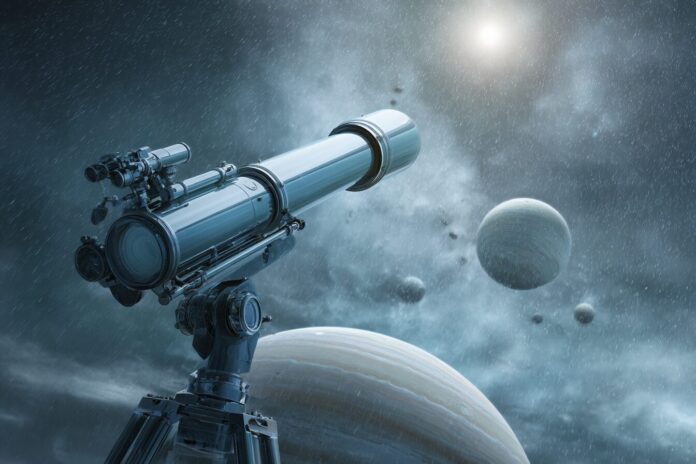From the frozen peaks of distant moons to the enigmatic expanses of exoplanets, exotic ice has emerged as a key factor in decoding the hidden workings of our universe. Most importantly, advancements in infrared technologies are enabling scientists to unveil ice formations that were once beyond our observational capabilities. Because these instruments harness the power of infrared spectroscopy, they not only map surface compositions but also reveal intricate details about ice structures under extreme conditions.
Indeed, these techniques have opened up new frontiers in planetary science. Therefore, as we continue to push the limits of technology, our understanding of how ice forms and evolves in space is rapidly expanding. Besides that, the detection of exotic ice promises to enrich our insights into planetary geology and the potential habitability of celestial bodies.
Why Exotic Ice Matters in Planetary Science
Exotic ice, which forms under extreme pressures and ultralow temperatures, is more than a scientific curiosity. Because water ice is a common constituent across the universe—from Earth’s polar caps to the surfaces of distant moons—the unique variations present in extreme environments on bodies like Europa, Enceladus, and Pluto garner significant scientific interest. Most importantly, these specialized forms of ice carry vital clues about the internal dynamics, geological histories, and even potential biosignatures of these worlds.
Because exotic ice encompasses a range of unique crystalline structures, each variation informs us about the formation conditions and evolutionary processes at work. For instance, specific polymorphs can indicate the presence of subsurface oceans or cryovolcanism. Therefore, researchers rely heavily on infrared techniques to distinguish these phases by detecting distinct absorption lines in the ice’s spectral fingerprint, as discussed in recent studies on exotic ice detection.
The Science of Spectroscopy: How Infrared Instruments Work
Spectroscopy lies at the heart of modern astronomical observations. Infrared instruments capture light that is absorbed and emitted by ice, revealing unique wavelengths that act as molecular fingerprints. Most importantly, by analyzing these spectral characteristics, scientists can distinguish between various forms of ice, even those that are hidden beneath a layer of dust or obscured by atmospheric interference.
Because each type of ice has distinct absorption features, advanced spectrographs—such as those on the James Webb Space Telescope (JWST) and the Jupiter Icy Moons Explorer (JUICE)—are meticulously calibrated to detect these differences. As a result, every spectral line and absorption feature provides essential clues about the composition and physical state of frozen surfaces, as noted in detailed research available at Space.com.
Advanced Missions: JWST, JUICE, and Cutting-Edge Spectrographs
The JWST and JUICE missions are at the forefront of this exploration. JWST’s state-of-the-art infrared detectors are designed to capture faint emissions from molecules and ices that exist in varied extraterrestrial environments. Most importantly, these instruments not only provide clarity about planetary surfaces but also allow for the study of dynamic processes such as tectonic shifts and cryovolcanism.
In addition, JUICE is specially tasked with exploring Jupiter’s icy moons, including Europa, Ganymede, and Callisto. Therefore, by obtaining high-resolution spectra from these celestial bodies, scientists can learn about both their surface features and internal geophysical processes. Moreover, ground-based instruments like NIRPS and Henrietta further complement space-based observations by focusing on nearby stellar systems.
Laboratory Insights and Field Applications
Recent laboratory experiments have played a crucial role in calibrating these infrared tools. Because scientists have meticulously cataloged the absorption lines of various ice polymorphs—such as Ice II, Ice V, and Ice XI—they now use these signatures as benchmarks for remote sensing. Therefore, these controlled experiments directly inform how data is interpreted from both spaceborne and ground-based missions.
Moreover, the application of laboratory findings to field observations has allowed researchers to confirm the presence of unique ices in extreme environments. Besides that, such integrations have significantly improved the accuracy and reliability of remote measurements, enhancing our ability to map and study the diverse nature of ice in the universe. As a result, astronomers are now better equipped to understand the evolution and potential habitability of distant worlds.
Infrared Technologies: Overcoming Challenges and Paving the Way Forward
Developing sensitive and reliable infrared detectors remains a formidable challenge. Because these instruments must operate at cryogenic temperatures, issues such as thermal noise and calibration inconsistencies often arise. Most importantly, ensuring that the detectors do not interfere with the measurements is crucial. For instance, retrofitting technology from one mission to another involves tackling differences in operational environments, as highlighted in the Ice Giant Systems Seminar Series.
Besides that, ongoing collaborations between research institutions and space agencies are focused on overcoming these technical obstacles. Therefore, as new materials and technologies are developed, the next generation of infrared instruments will offer unprecedented sensitivity and precision, paving the way for groundbreaking discoveries.
Exotic Ice: A Beacon for Future Explorations
Looking into the future, the role of infrared spectroscopy in planetary exploration is set to expand even further. Most importantly, enhanced detection capabilities will allow missions to more comprehensively map the surfaces and atmospheres of both solar system bodies and exoplanets. Because each detection adds a new piece to the cosmic puzzle, scientists will be able to develop more accurate models of how icy worlds evolve over time.
Furthermore, the continuous evolution of infrared technology offers the promise of uncovering hidden features, such as subsurface oceans and cryovolcanic activity, which are critical in assessing the potential for life. Therefore, as we refine these instruments, they will continue to serve as a beacon for future explorations and deepen our understanding of the universe’s frozen frontiers. For further insights, readers are encouraged to explore updates from sources like the Université de Montréal and detailed overviews on Space.com.



